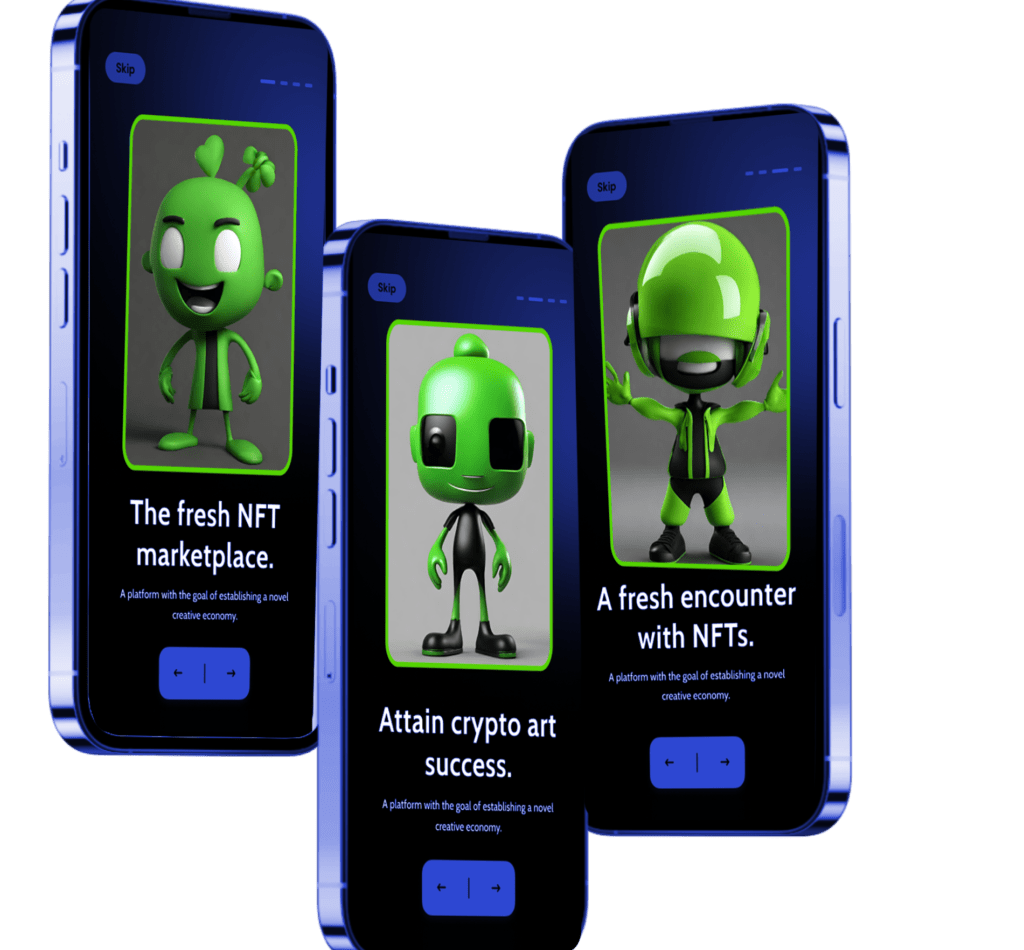Home / Case Study/ Design Case Study / NFT
NFT Crypto
Non-fungible tokens (NFTs) are a type of digital asset that represent ownership or proof of authenticity of a unique item or piece of content, typically using blockchain technology. Unlike cryptocurrencies such as Bitcoin or Ethereum, which are fungible and can be exchanged on a one-to-one basis, NFTs are non-fungible, meaning each token is distinct and cannot be exchanged on a like-for-like basis with another NFT.
Problem Statement
The problem statement related to NFTs (Non-Fungible Tokens) can encompass various aspects and challenges within the NFT ecosystem. Here are some key problem areas associated with NFTs.
Lack of Standardization: The NFT market lacks standardized protocols, leading to interoperability issues. NFTs created on one blockchain may not work seamlessly on another, limiting their utility.
Copyright and Plagiarism: NFTs have been linked to issues of copyright infringement and plagiarism, as it can be challenging to verify the originality and ownership of digital assets.
Environmental Concerns: Many NFTs are built on blockchain networks like Ethereum, which can be energy-intensive. The environmental impact of NFTs, especially in the face of climate change concerns, has raised questions.


Goals and Objectives
Tokenizing Assets.
Improved Liquidity.
Ownership and Provenance Verification.
Smart Contracts for Transactions.
Compliance and Security.
User-Friendly Interface.
Interoperability.
Educational Resources. Scalability.
Market Research and Analysis.
Feedback and Improvement Loop.
Risk Management.
Improved Liquidity.
Ownership and Provenance Verification.
Smart Contracts for Transactions.
Compliance and Security.
User-Friendly Interface.
Interoperability.
Educational Resources. Scalability.
Market Research and Analysis.
Feedback and Improvement Loop.
Risk Management.
Design Thinking Process
Empathize
User Research
User Interview
Entrant Analysis
Define
User Persona
User Journey Map
Goal Statement
Empathy Map
Ideate
Brainstorming
Card Sorting
User Flow
Design
Paper Wireframes
Visual Design
Prototype
Test
Check Usability
Survey Insight
Improvements
Deliver
Deliver
Item
User Research
User Interview
Entrant Analysis
Define
User Persona
User Journey Map
Goal Statement
Empathy Map
Ideate
Brainstorming
Card Sorting
User Flow
Design
Paper Wireframes
Visual Design
Prototype
Test
Check Usability
Survey Insight
Improvements
Deliver
Deliver
Item











